#France fossil
Explore tagged Tumblr posts
Photo

Large Fossil Nummulites Oligocene France Menton Foraminifera Genuine Specimen
Large Fossil Foraminifera (Nummulites sp)
Geological Period: Oligocene Epoch
Age: Approximately 33.9 to 23 million years ago
Formation/Locality: Menton, Alpes-Maritimes, France
This is a well-preserved large fossil of Nummulites sp, a genus of foraminifera — single-celled marine protozoans with complex shells (tests). Unlike most foraminifera, which are microscopic, Nummulites are famously macroforaminifera, with some specimens reaching several centimetres in diameter.
This example comes from the renowned Oligocene deposits near Menton, in the Alpes-Maritimes region of southeastern France, where Nummulites fossils are found in abundance within shallow marine limestones. These organisms thrived in warm, tropical seas, and their dense accumulations once formed entire banks of limestone — famously used by the ancient Egyptians in the construction of pyramids.
Nummulites are instantly recognisable by their coin-like, lenticular shape, with a spiral internal structure. Their abundance and size make them excellent biostratigraphic markers for dating Tertiary sedimentary rocks.
Actual Specimen Pictured: You will receive the exact fossil shown in the listing photo.
Scale Rule: 1cm cube included in the image for full sizing. Please refer to the photo.
Condition: Natural with light preparation; ideal for both educational and display purposes.
Perfect for:
Palaeontology enthusiasts and fossil collectors
Students and educators in Earth sciences
Natural history displays and decor
Gifts for geology lovers
All of our Fossils are 100% Genuine Specimens & come with a Certificate of Authenticity.
Our pieces are carefully selected for their scientific interest, visual appeal, and authenticity.
#fossil Nummulites#fossil foraminifera#Oligocene fossil#France fossil#Menton fossil#Alpes Maritimes fossil#microfossil giant#geological specimen#genuine fossil#large Nummulites#fossil sea creature#Oligocene limestone#scientific fossil#fossil decor#fossil collector item
0 notes
Photo


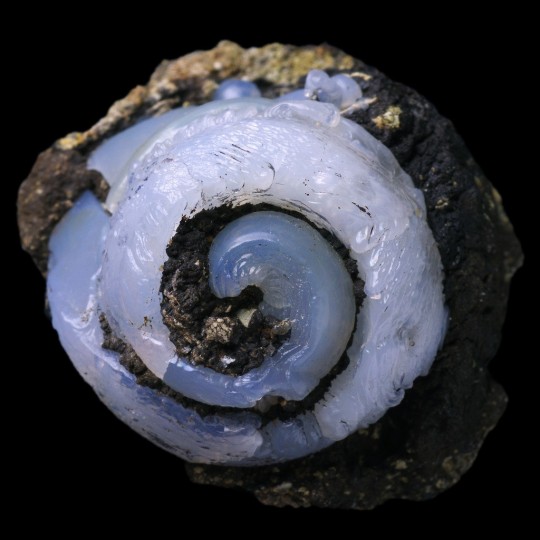
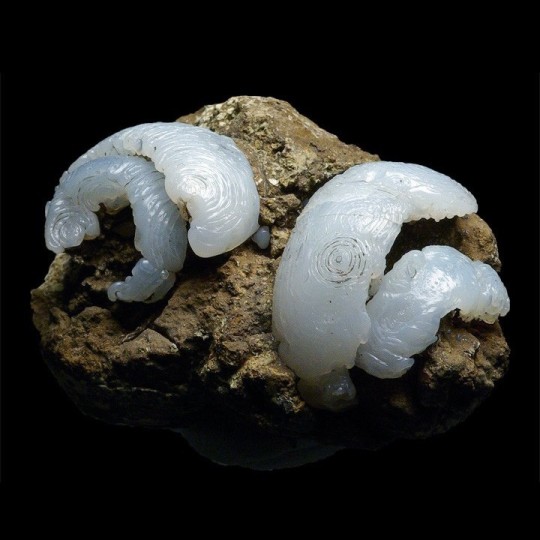
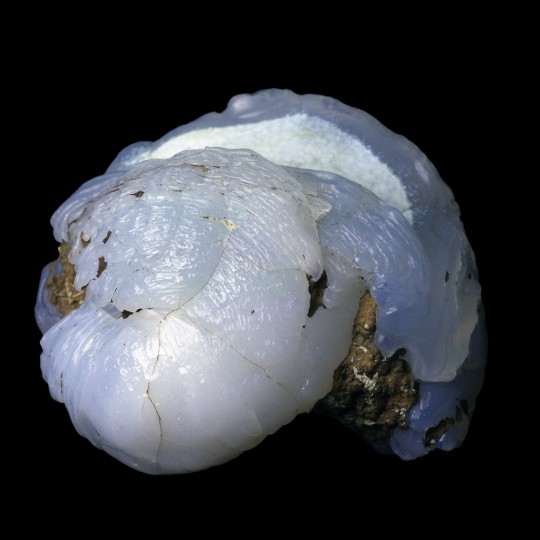
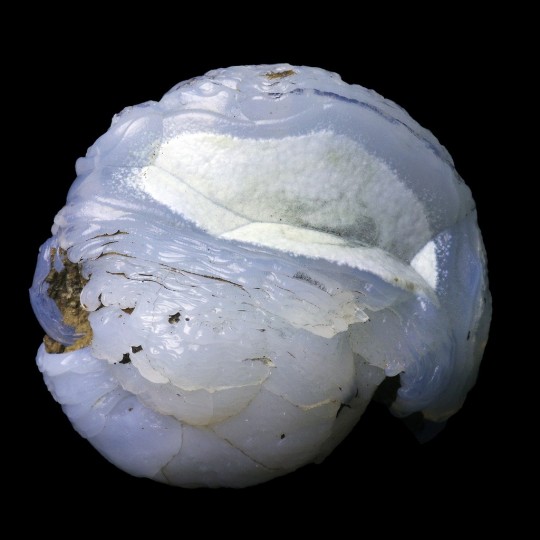
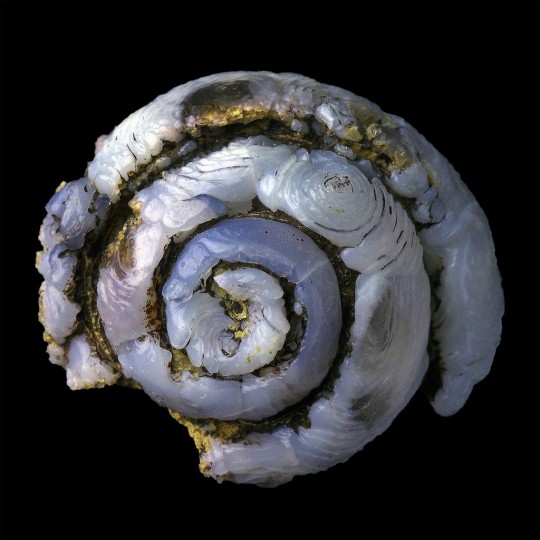
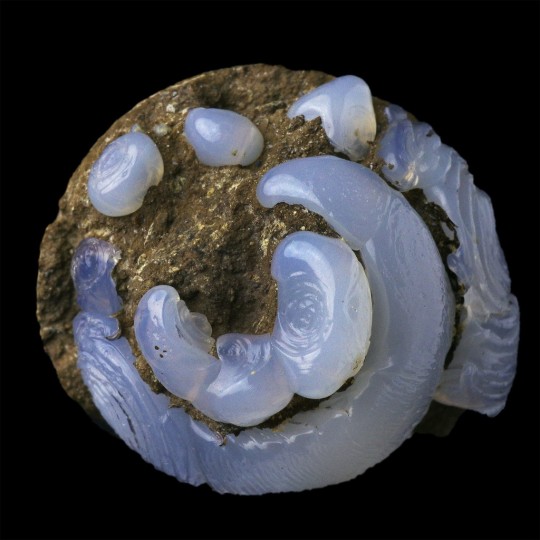


Epigenised (Opal-CT, Lussatite) Helix Ramondi snail fossil, from Dallet, Puy-De-Dôme, France.
#opal-ct#lussatite#epigenised#epigenized#snail#snails#helix ramondi#gastropod#gastropods#animal#animals#fossil#fossils#fossilised#fossilized#ancient#dallet#puy-de-dôme#puy-de-dome#france
17K notes
·
View notes
Text
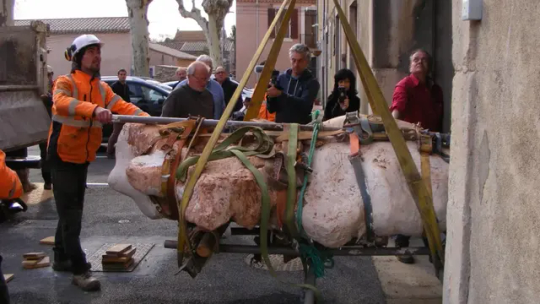
A 70 Million-Year-Old Titanosaur Dinosaur Skeleton Found in France
A chance discovery made in southern France has revealed a rare specimen — an almost complete dinosaur skeleton found connected from its hind skull to its tail.
The massive fossil came to light in May 2022, after now 25-year-old amateur paleontologist Damien Boschetto and his dog stumbled across something unusual while walking in a forest in Montouliers, France. Boschetto had noticed a cliff edge that had recently collapsed and decided to take a closer look, when he spotted an exposed bone sticking out of the ground, local media outlet France Bleu first reported on February 13.
The Archaeological and Paleontological Cultural Association at the Cruzy Museum, in collaboration with the French National Center for Scientific Research, identified the nearly 10-meter-long (32.8-foot-long) fossil as a Titanosaur skeleton upon excavation. Boschetto, who has been a member of the association for eight years, said that while unearthing dinosaur remains is “always exciting and interesting for scientific research and the understanding of the ecosystems of that time,” finding the bones in their almost original anatomical position is what makes this find extraordinary.
“From a museography point of view, it will make it possible to present to the general public animals almost complete in anatomical positions, which is something great,” Boschetto added via email.
A group of history and archaeology enthusiasts created the Archaeological and Paleontological Cultural Association in 1975 to safeguard the heritage around the village of Cruzy, with several members becoming enlightened amateurs in paleontology due to the areas’ wealth of dinosaur fossils, said Jean-Marc Veyssières, a member of the group and one of the fossil preparers for this discovery. Today, the association is made up of inhabitants of the region, including a few scientists as well as students.
“The most exciting thing was to realize that we had at least one anatomically connected animal and that it was a titanosaur, a long-necked dinosaur,” said Veyssières in an email. “(Boschetto) is an enlightened enthusiast and curious about nature, he spends a lot of time surveying the region in search of new areas. … He became an expert on the Late Cretaceous fauna of our region.”
The association has been excavating the site, which Boschetto referred to as a bone bed, a term used by paleontologists to describe a dense area of animal bones and other fossilized remains, for the past two years. And the newly announced find was not Boschetto’s first.
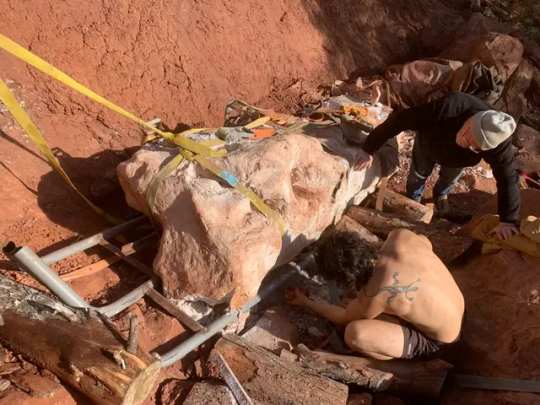
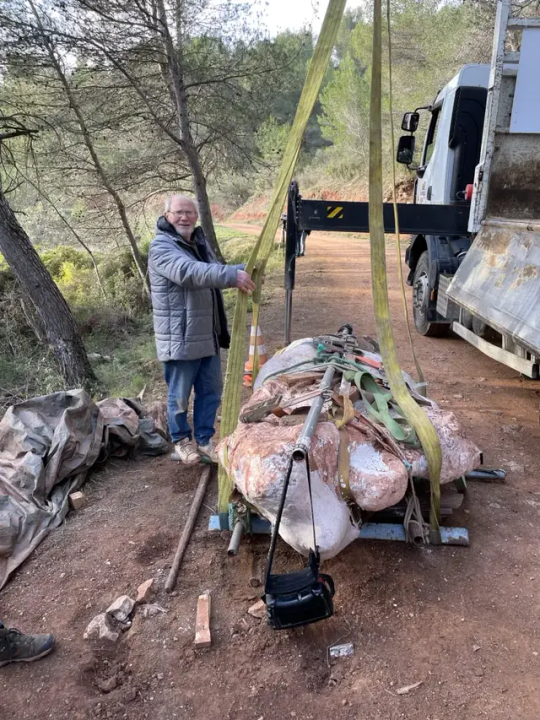
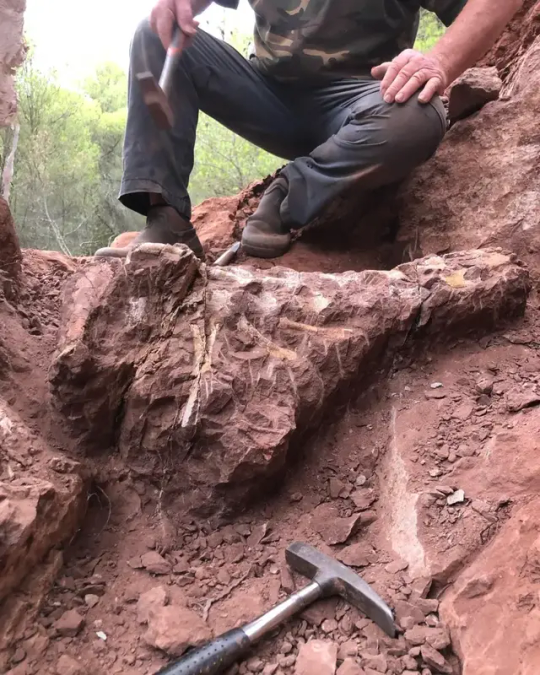
The recently revealed 70% complete Titanosaur skeleton was retrieved during the excavation along with several fossils of various dinosaurs and other vertebrates, including some in anatomical connection and near complete. Other remains identified included those of a Rhabdodon — a herbivore, or plant-eater, like the Titanosaur — and fragments from skeletons of carnivores such as Theropods and crocodiles, according to Boschetto.
The Titanosaur skeleton currently resides in the Cruzy Museum’s laboratory, where it will be further studied, Veyssières said.
Titanosaur found intact
Researchers estimated the age of the newly discovered fossil to be around 70 to 72 million years old, but Titanosaurs roamed around on four legs from the Late Jurassic Epoch to the end of the Cretaceous Period, approximately 163.5 million to 66 million years ago. Titanosaurs belong to a larger group of dinosaurs known as sauropods, a family of long-necked herbivores that were some of the largest dinosaurs of their time, according to Britannica.
Remains of Titanosaur fossils are widely unearthed in Europe, but few are discovered in anatomical connection, Boschetto said. Finding a skeleton in this connected state suggests that the body was buried before it had entirely decomposed, leaving “some tissues connecting the bones to one another,” said Matthew Carrano, research geologist and curator of Dinosauria at the Smithsonian Institution National Museum of Natural History.

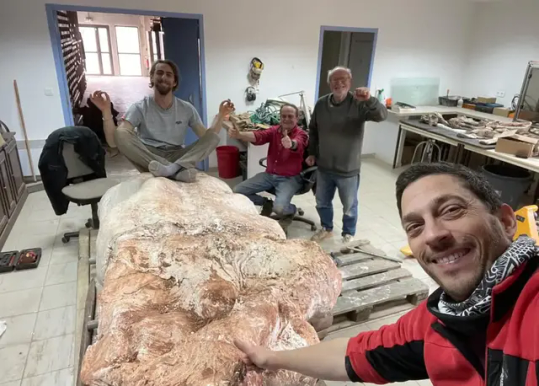
The completeness of the specimen will “make it easier to determine whether it’s a new species or a new specimen of a species that’s already known,” Carrano said in an email. “It will take time to learn all the details about this new specimen, but I’m sure it will provide important new information about this group of dinosaurs.”
The region in which Boschetto discovered the specimen is known to be rich in fossils of dinosaurs and other species living at the same time and is “building one of the largest collections of dinosaurs from the Upper Cretaceous in France,” he said. The association did not publicize the discovery until excavation was complete to protect the archaeological site, he added.
The association plans to continue research on the fossils and to further search the area, and the group’s members hope to obtain the funds to “create a large-scale museum that can accommodate and present these collections,” Boschetto said.
By Taylor Nicioli.
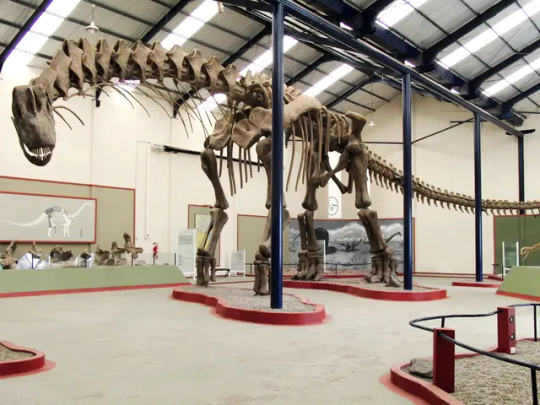


#A 70 Million-Year-Old Titanosaur Dinosaur Skeleton Found in France#Montouliers France#paleontologist#dinosaurs#fossils#ancient artifacts#archeology#archeolgst#history#history news#ancient history
416 notes
·
View notes
Text
Massive Arietites Ammonites in Natural Matrix with Custom Base from Nancy, France ☠️😵💫☠️
Nature is Art 🫠
#NorthernMaineMinerals
#northernmaineminerals#nmmrockshop#fossils#fossil#ammonite#ammonites#nancyFrance#France#French fossils#arietites#minerals#crystals#mainerockshop#fossilcollector#fossilporn#fossilfriday#fossilcollecting#fossilized#fossil the day
94 notes
·
View notes
Text
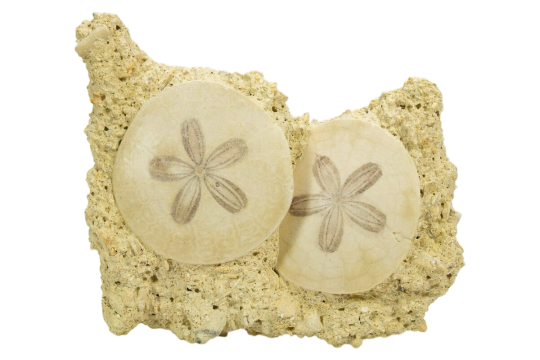
Two Fossil Sand Dollars (Scutella) - France
#scutella#miocene#fossil sand dollars#sand dollar#sand dollars#fossil#fossils#sand dollar fossil#France#ocean fossil#fossilized#png#transparent#paleontology#prehistoric#paleoblr
26 notes
·
View notes
Text
Paleontology enthusiasts have unearthed one of the world's richest and most diverse fossil sites from the Lower Ordovician period (around 470 million years ago). Located in Montagne Noire, in the Hérault department of France, this deposit of over 400 fossils is distinguished by an exceptionally well-preserved fauna. In addition to shelly components, it contains extremely rare soft elements such as digestive systems and cuticles, in a remarkable state of preservation. Moreover, this biota was once located very close to the South Pole, revealing the composition of Ordovician southernmost ecosystems.
Contine Reading.
73 notes
·
View notes
Text
Galerie de Paléontologie et d'Anatomie Comparée






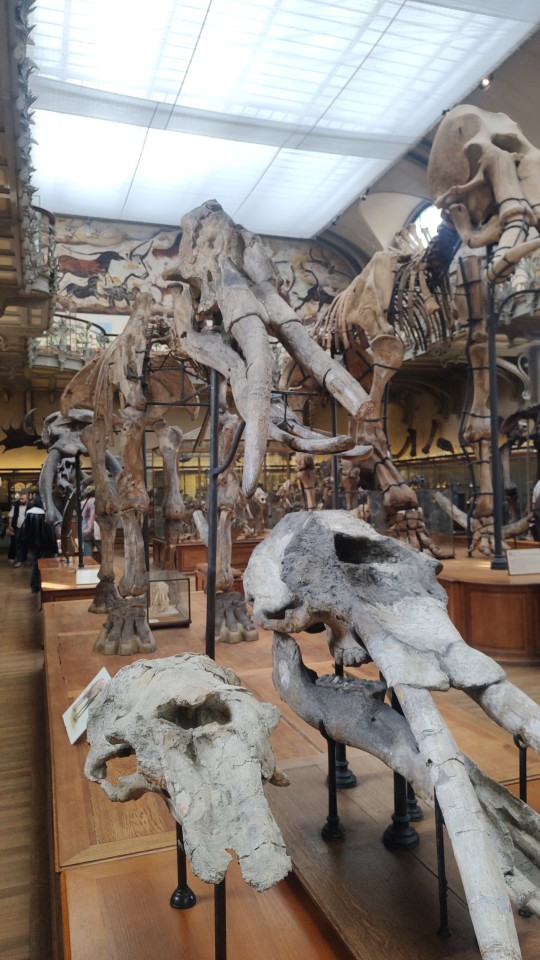



#europe#france#paris#musee#galerie#paleontologie#anatomie comparee#art d'anatomie#squelette#l'écorche de pinson#europa#francia#galeria#paleontology#paleontologia#esqueleto#museo#fossils#fosil#historia#histoire#prehistoire#prehistoria
7 notes
·
View notes
Text
Arthropleura are arthropods like insects, crustaceans, and spiders. Arthropleura lived between 290 million and 346 million years. It may be a common ancestor of millipedes and centipedes.
Arthropleura's head can reveal what it ate among other facts
8 notes
·
View notes
Text
Throwback Thursday: Sauropod Eggs
One of the things that always captured the imagination are baby dinosaurs. For a very long time, we knew next to nothing about dinosaur growth. In fact, they didn't even think babies could be preserved. It was a burning question: how did these terrible giants starts out life? In particular, how did an animal as large as a sauropod start out life?

In 1859, Roman Catholic priest, Father Jean-Jacques Pouech found the answer while exploring the geology of the foothills of the Pyrenees Mountains. Here is what he had to say about the find:
"The most remarkable are eggshell fragments of very great dimensions. At first, I thought that they could be integumentary plates of reptiles, but their constant thickness between two perfectly parallel surfaces, their fibrous structure, normal to the surfaces, and especially their regular curvature, definitely suggest that they are enormous eggshells, at least four times the volume of ostrich eggs."
However, this amazing find was overlooked by others and so he spent the rest of his life believing they were armadillo shell fragments. In 1989, though, the fragments were revisited and determined they were, in fact, dinosaur eggshell.

Tune in tomorrow for a look at Mamenchisaurus, the sauropod with the longest neck.
13 notes
·
View notes
Text
Shells and Fossils, c. 1850.
📷 Louis Daguerre

11 notes
·
View notes
Photo

Large Fossil Nummulites Oligocene France Menton Foraminifera Genuine Specimen
Large Fossil Foraminifera (Nummulites sp)
Geological Period: Oligocene Epoch
Age: Approximately 33.9 to 23 million years ago
Formation/Locality: Menton, Alpes-Maritimes, France
This is a well-preserved large fossil of Nummulites sp, a genus of foraminifera — single-celled marine protozoans with complex shells (tests). Unlike most foraminifera, which are microscopic, Nummulites are famously macroforaminifera, with some specimens reaching several centimetres in diameter.
This example comes from the renowned Oligocene deposits near Menton, in the Alpes-Maritimes region of southeastern France, where Nummulites fossils are found in abundance within shallow marine limestones. These organisms thrived in warm, tropical seas, and their dense accumulations once formed entire banks of limestone — famously used by the ancient Egyptians in the construction of pyramids.
Nummulites are instantly recognisable by their coin-like, lenticular shape, with a spiral internal structure. Their abundance and size make them excellent biostratigraphic markers for dating Tertiary sedimentary rocks.
Actual Specimen Pictured: You will receive the exact fossil shown in the listing photo.
Scale Rule: 1cm cube included in the image for full sizing. Please refer to the photo.
Condition: Natural with light preparation; ideal for both educational and display purposes.
Perfect for:
Palaeontology enthusiasts and fossil collectors
Students and educators in Earth sciences
Natural history displays and decor
Gifts for geology lovers
All of our Fossils are 100% Genuine Specimens & come with a Certificate of Authenticity.
Our pieces are carefully selected for their scientific interest, visual appeal, and authenticity.
#fossil Nummulites#fossil foraminifera#Oligocene fossil#France fossil#Menton fossil#Alpes Maritimes fossil#microfossil giant#geological specimen#genuine fossil#large Nummulites#fossil sea creature#Oligocene limestone#scientific fossil#fossil decor#fossil collector item
0 notes
Photo
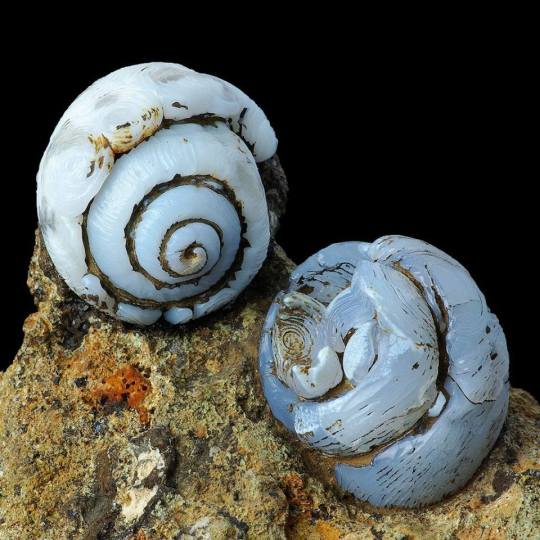
Helix Ramondi (land snail fossil) epigenised with Lussatite. Dallet, France. By Geologist2K12 on Facebook.
#snail#snails#helix ramondi#gastropod#gastropods#animal#animals#fossil#fossils#opal-ct#lussatite#mineral#minerals#epigenised#epigenized#dallet#france#ancient#facebook
87 notes
·
View notes
Text

Accumulation of scallops on gangue, Miocene (around 20 million years old, Lacoste Quarry, France.
16 notes
·
View notes
Text

Bryozoa, Cap Griz Ness, Normandy, France
#geology#ggg#original tumblr photographers#photographers on tumblr#nature#earth#fossils#griz ness#France#palaeontology
3 notes
·
View notes
Text

3pcs 10mm Ammonite Pyrite Jurassic Fossil France lot Golden 546
#ammonoid#ammonite#fossil#fossils#fossil shell#pyrite#france#png#transparent#paleontology#prehistoric#paleo#paleoblr
36 notes
·
View notes
Text
youtube
Citroen eC3 Aircross - Full Detailed Review & Drive
Citroen eC3 Aircross - Full Detailed Review & Drive
P.S. Drive electric and forget about gasoline prices! and dependence on oil prices set by OPEC cartel...
#France#Spain#Ireland#Citroën#Citroen eC3 Aircross#electric crossover#electric vehicle#fossil fuel phase out#OPEC#cartel#demise of big oil#Youtube
2 notes
·
View notes